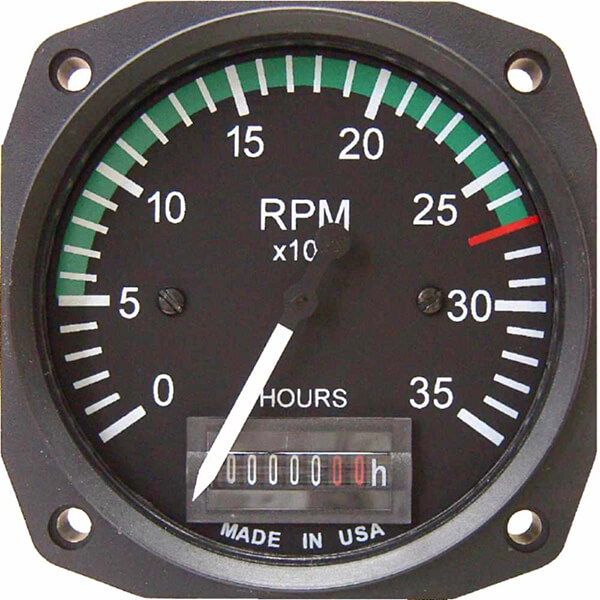Secret Reasons Having a Tachometer Is Important for Keeping Engine Health and Efficiency
This modest yet essential tool plays a critical duty in the maintenance of an engine's health and efficiency. By supplying real-time data on engine rate and RPM levels, a tachometer uses invaluable insights that directly influence the performance and longevity of the engine. Allow's discover the crucial reasons behind its critical function in preserving engine wellness and efficiency.
Avoiding Engine Over-Revving

To guard the engine from prospective damage, it is crucial to execute steps that stop over-revving, a practice that can bring about expensive repairs and reduced engine life expectancy. Over-revving happens when the engine's rotational rate exceeds the optimum limitation established by the supplier, causing excessive stress on internal elements such as pistons, valves, and connecting rods. This excessive stress can result in mechanical failures, including bent valves, harmed pistons, and also disastrous engine failing.
One effective procedure to stop over-revving is the installment of a rev limiter. A rev limiter is a gadget that regulates the optimum RPM (changes per minute) of the engine by either cutting off fuel circulation or spark to the engine when the pre-set limitation is gotten to. Furthermore, educating vehicle drivers and operators on the value of keeping track of engine RPM via the tachometer can help avoid unintended over-revving. Routine maintenance checks to make sure the engine remains in ideal problem can likewise assist in avoiding over-revving incidents and prolonging the engine's life expectancy. By embracing these preventive procedures, the risk of engine damages due to over-revving can be dramatically decreased.
Optimizing Gas Consumption
Efficient fuel intake plays an essential duty in making best use of the performance and sustainability of an engine. tachometer. Enhancing gas intake not only assists in reducing operational prices yet likewise reduces the ecological influence of car exhausts. By utilizing a tachometer to check engine rate and readjust driving practices accordingly, motorists can attain better fuel effectiveness
Keeping a consistent rate and staying clear of abrupt accelerations and decelerations can dramatically boost gas economy. In addition, correct gear option based on the tachometer analyses makes sure that the engine runs within its ideal array, resulting in extra reliable fuel combustion.
Regularly checking the tachometer can also aid recognize any kind of inadequacies or mechanical issues that may be influencing fuel usage. For example, a sudden increase in gas usage without an equivalent change in driving routines might suggest an issue visit this web-site that requires focus.
Monitoring Engine Wellness
Checking engine health is essential for making certain ideal performance and long life of the vehicle. By making use of a tachometer to keep track of engine rate, chauffeurs can detect abnormalities that might suggest prospective problems with the engine. A tachometer provides real-time data on engine transformations per minute (RPM), allowing chauffeurs to determine any type of uncommon spikes or decreases in RPM that can signal issues such as misfires, worn-out parts, or engine getting too hot.

On a regular basis checking engine wellness with the use of a tachometer enables vehicle drivers to address problems quickly before they intensify and cause significant damages. For instance, identifying a decrease in RPM can show gas delivery problems or a clogged up air filter, while an unexpected increase in RPM may indicate concerns with the transmission or exhaust system. By remaining cautious and receptive to changes in engine efficiency, vehicle drivers can stop pricey repair services and ensure the overall health and efficiency of their vehicle.
Extending Engine Lifespan
Ensuring the longevity of an engine calls for persistent maintenance methods and alert tracking of crucial efficiency indicators. Expanding an engine's life-span is essential for lowering overall vehicle click to read more maintenance expenses and avoiding unforeseen break downs. A tachometer plays a significant duty in this facet by offering real-time information on engine rate, permitting vehicle drivers and mechanics to make educated decisions to avoid excessive deterioration.

Furthermore, routine maintenance based on tachometer readings, such as prompt oil changes and ignition system replacements, can dramatically add to expanding the engine's long life. Generally, integrating a tachometer right into routine engine surveillance techniques is important for protecting the engine's health and wellness and effectiveness over the lengthy term.
Conserving Money on Repairs
A tachometer assists in checking the engine's RPM (changes per minute), enabling motorists to operate within the advised range. By staying within these optimal RPM levels, too much strain on the engine can be avoided, minimizing the chance of pricey fixings due to overworking the engine.
Furthermore, by utilizing the data from a tachometer to practice smooth acceleration and deceleration, drivers can lengthen the lifespan of their lorry's components, eventually saving cash on maintenance and replacements. In general, the understandings offered by a tachometer empower motorists to make informed decisions that can avoid unnecessary damage on the engine, leading to significant expense savings over time.
Conclusion
To conclude, a tachometer plays an essential role in maintaining engine wellness and efficiency by preventing over-revving, maximizing fuel intake, keeping track of engine health, expanding engine lifespan, and conserving money on fixings. It is a crucial tool for ensuring that the engine operates within secure limits and performs at its finest, eventually contributing to the durability and overall performance of the vehicle.